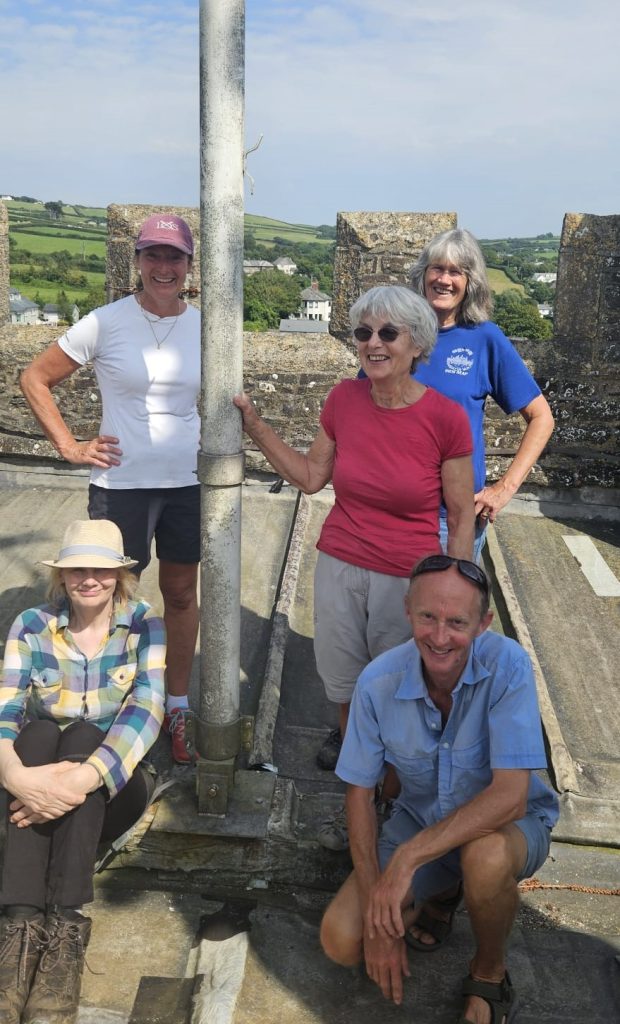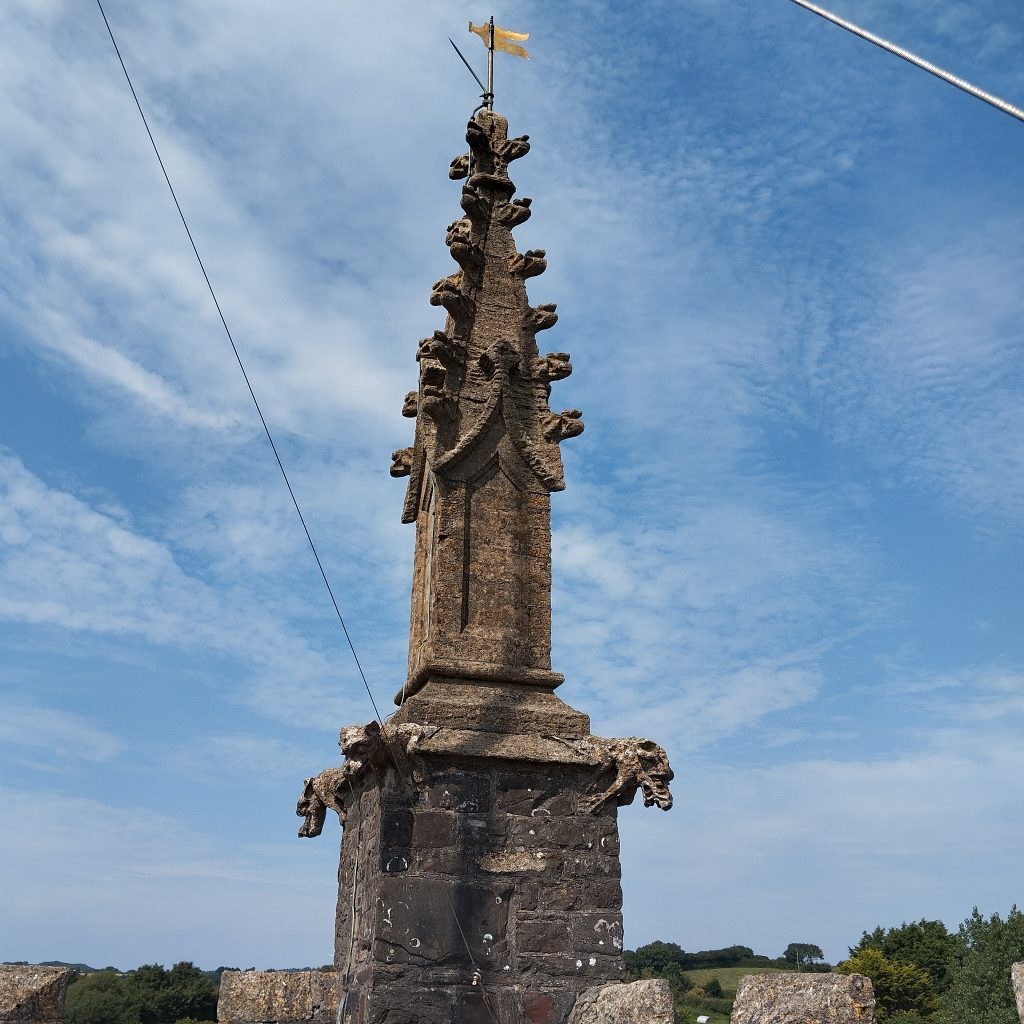
We dropped a car at Grimscott village hall car park then drove on, and started the walk at Hersham (meaning we didnt have to walk on a busy road) then followed the TC2C on lanes and fields to Launcells church. A couple walkers got distracted by the views and cows at a gateway and fell behind, but we reunited and rushed on to St. Swithin for 11:30am. A little later than our arranged time. Thanks to Helen for the welcome, we were able to make some lovely noise on the 6 bells and we’ll be back here again on our next stage.
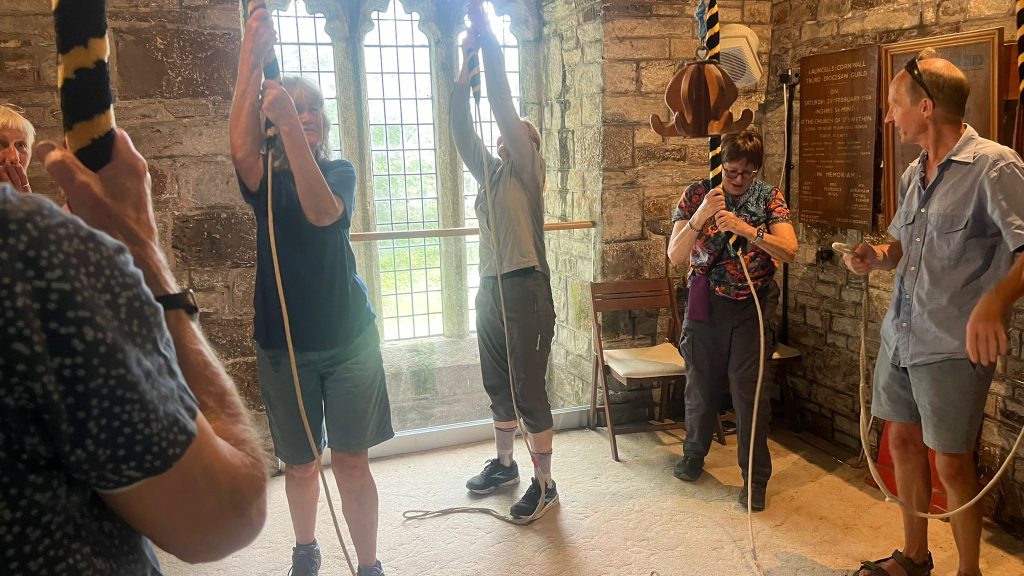
For now we headed off along footpaths to Stratton and onto Poughill, an hours walking. Through the fields of Stamford Hill, (where against overwhelming odds at the Battle of Stamford Hill the Parliamentary forces were routed on 16 May 1643).
St Olaf’s has impressive wall paintings, bench ends, medieval south door and roof bosses dating from the 1530s. Dave welcomed us and covered his ears as we pulled on the bell sally’s then climbed the tower to see the 6 bells and clock and up onto the roof with views stretching before us to Bude, a perfect day for sight seeing. Sir Goldsworthy Gurney brought about the adoption of a Standard Time throughout the country, a plaque above the entry door, records that the clock was placed in the Tower in his memory, by his daughter Anna. More about him later back at Launcells church.
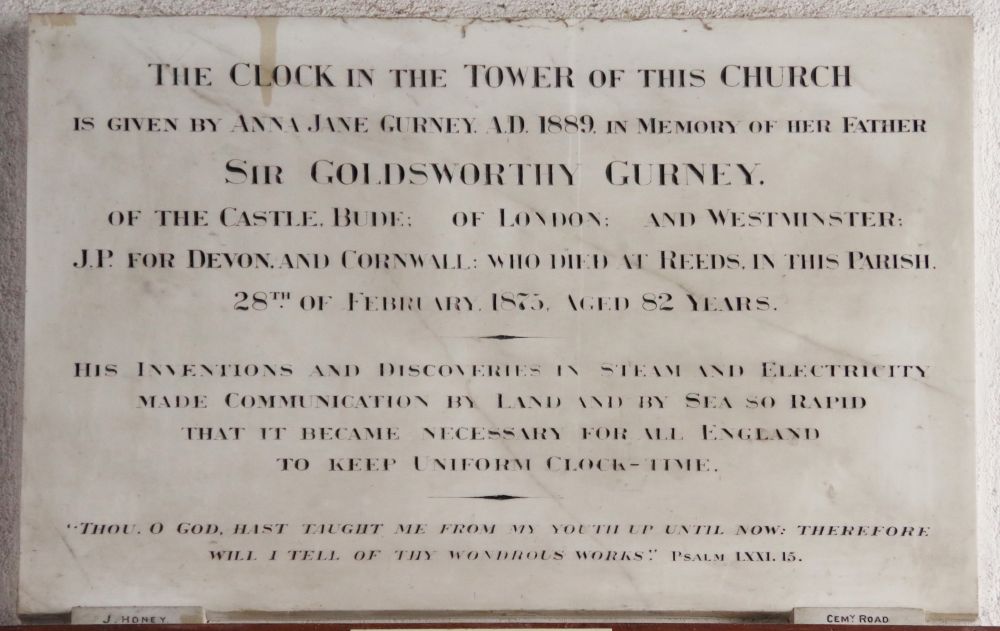
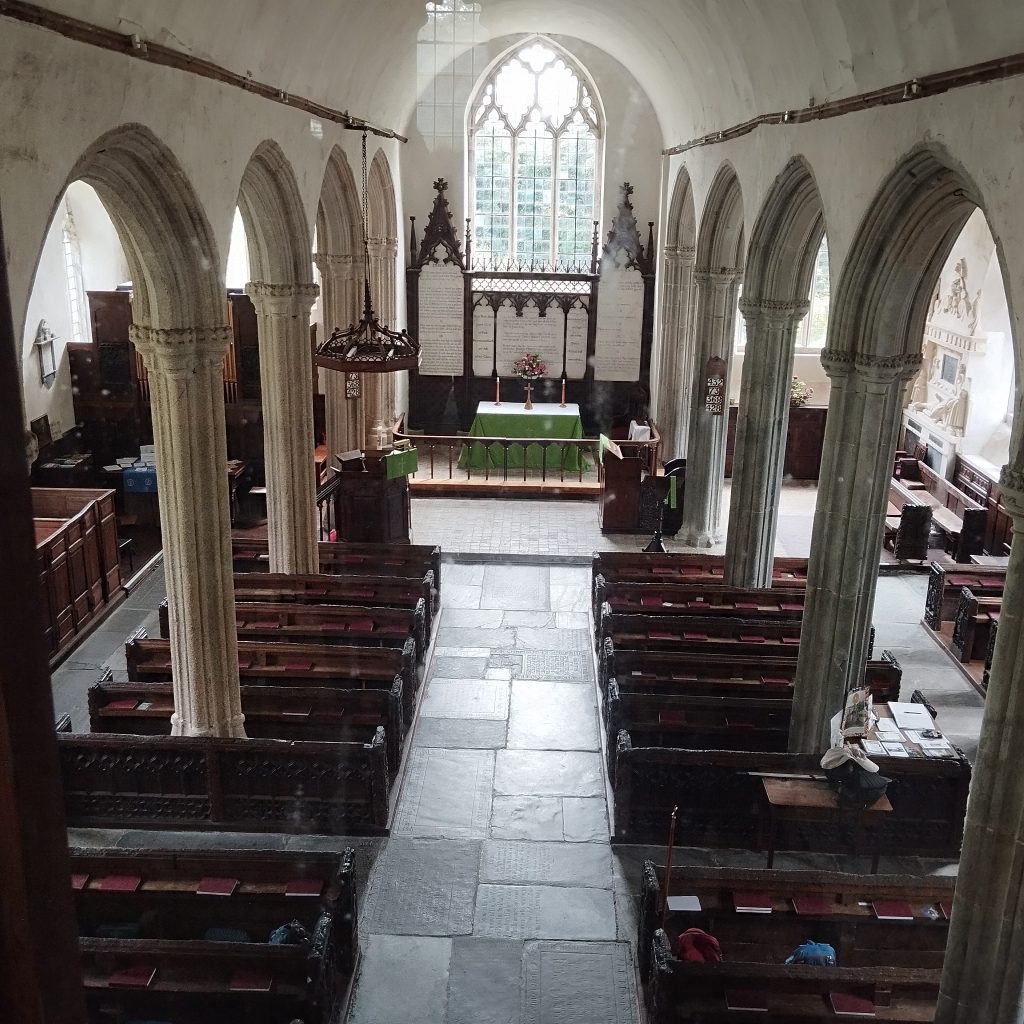
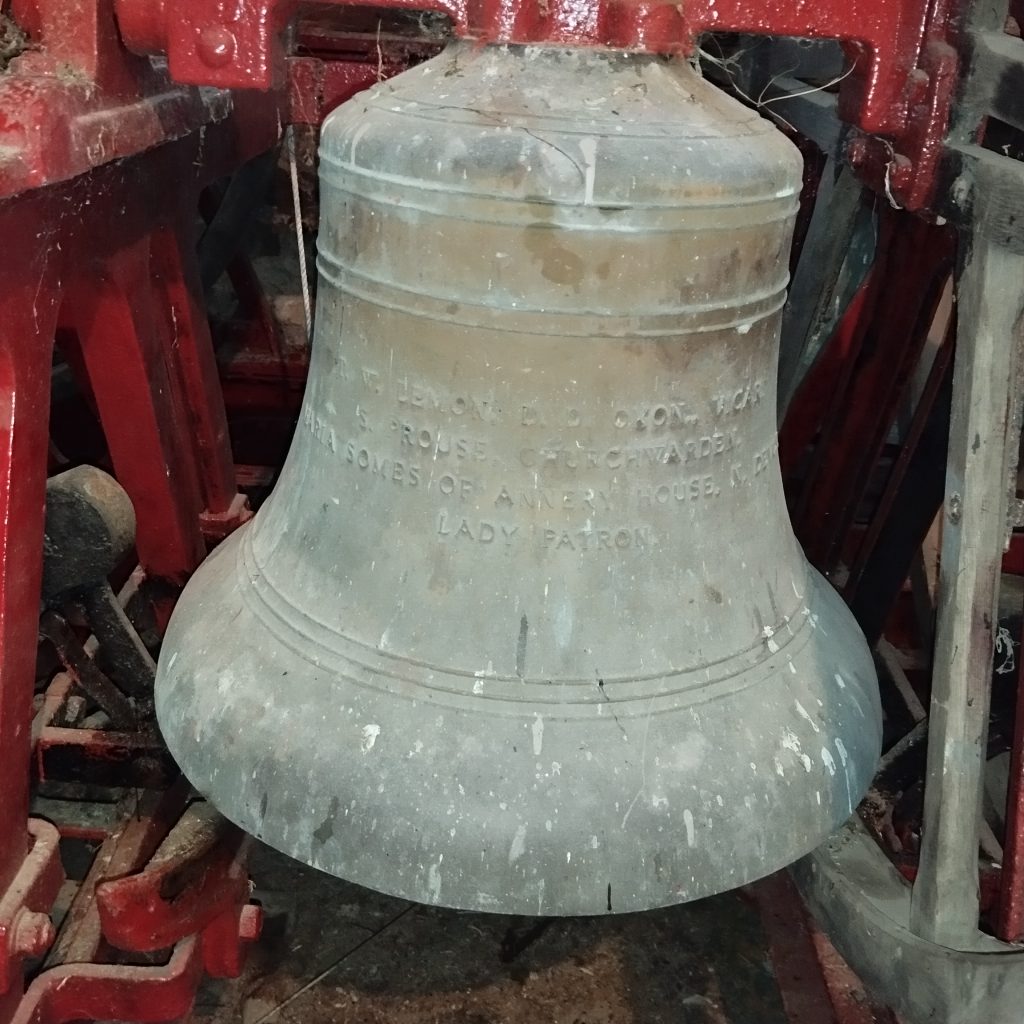
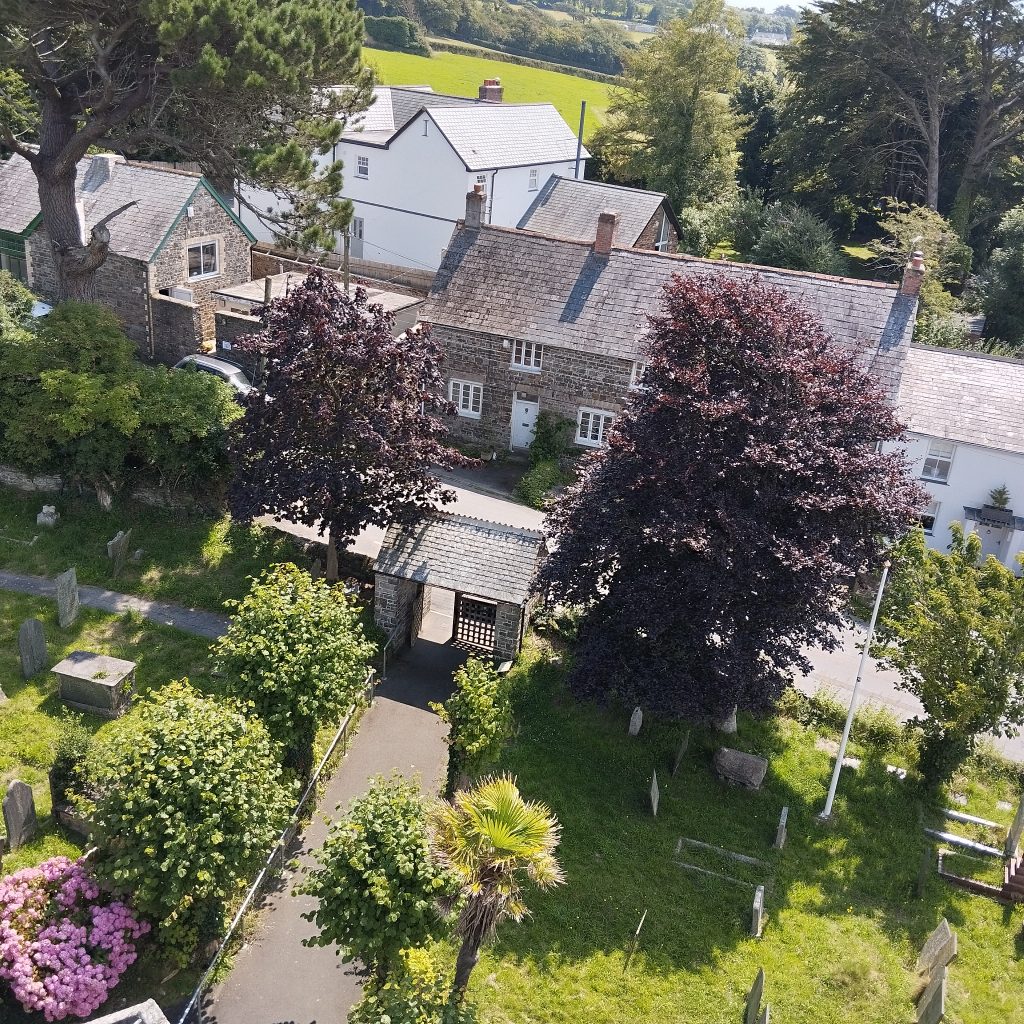
……………………………………………..
Once we’d wandered through the graves, in the large graveyard, we headed back down to Stratton via Broomhill Lane ……………………………………. arriving at St. Andrews at 2pm and in time for the afternoon cream teas event…
The wooden rood screen was completed in 1907 a fine example of the work of the Pinwell sisters work. We didn’t look for a GREEN MAN, is there one here? we did see the RED DRAGON (also one at St. Sampson’s) We struggled to chime the heavy bells, but enough noise to draw comments. Once we had enjoyed the tea and wonderful cakes and were refuelled, a very friendly crowd were arriving to have their fill. We were thrilled to climb the tower, pass the clock and bells to the top for more spectacular views and could see Launcells church nestled in the trees, and the town below us.
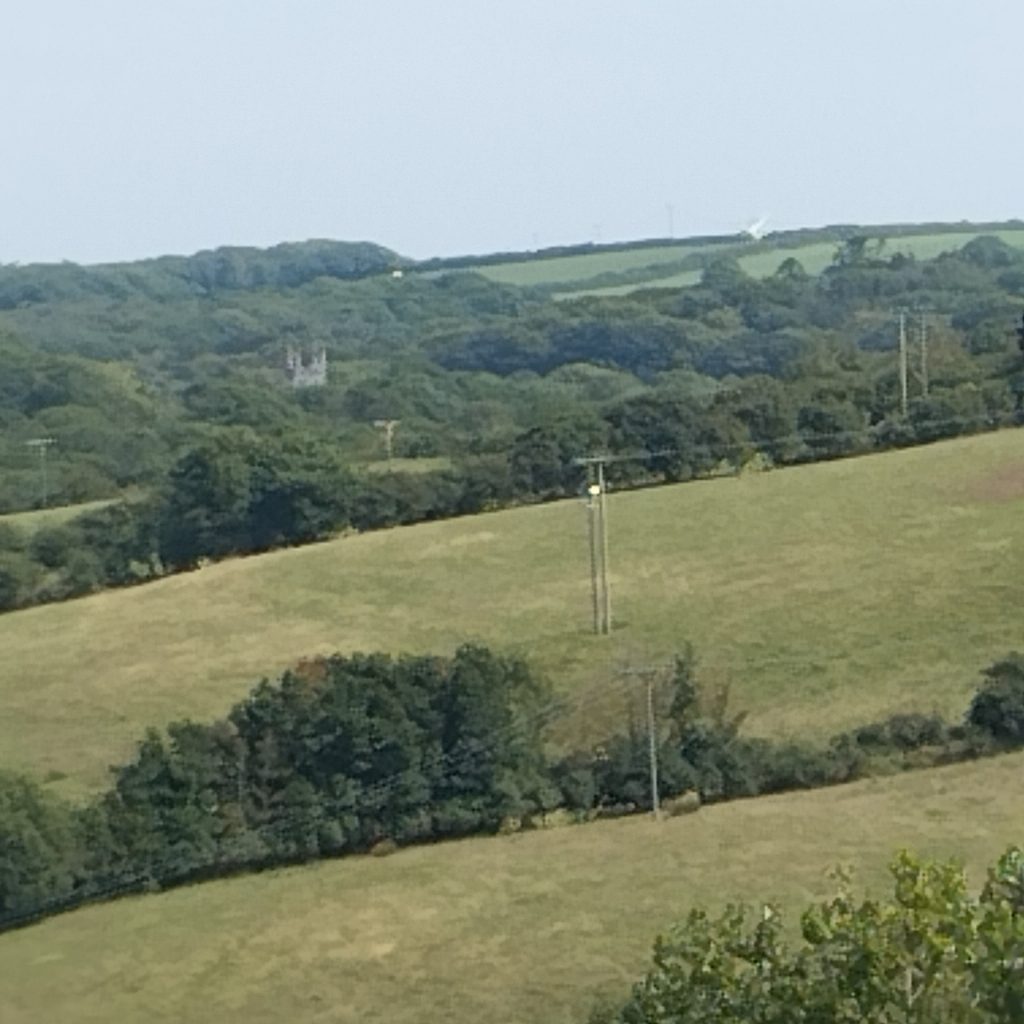
Back along the 7 Bridges walk, we did some lane walking before turning onto a track leading us back to Grimscott .
Around 10 miles. July 31st 2024

More notes: St Olaf the only Anglican church in Cornwall to be dedicated to a foreign king – King Olaf or Olave of Norway, who was born in 995 A.D. and killed in battle with pagans in 1030. Entry door dates to 15th century, complete with ironwork from that time, is still in position, but unable to close. Just above the door is a plaque recording the installation of the church clock in 1889 by Anna Jane Gurney, in memory of her father, the famous Sir Goldsworthy Gurney (1793-1875), builder of Bude Castle, surgeon, scientist and inventor. The font is behind the tower doors inside the tower. 67 medieval carved oak bench ends. 2 wall paintings of St Christopher, carrying the young Jesus across a river. They were discovered in1894 beneath whitewash (the church accounts actually record the “washing out” of the paintings in 1550) and the originals are believed to date from about 1470, although they were then rather garishly “restored” after their re-discovery.
St Andrews Stratton. The oldest part of the structure is the mid-fourteenth century north aisle, with the south aisle, chancel and tower having been added in the fifteenth century. The font precedes these as it has been dated to the twelfth century. On display are the old town stocks and the studded door from Stratton Gaol, with iron nails outlining the word CLINK. A display case contains battlefield relics from the Civil War, found at nearby Stamford Hill, and a copy of a letter sent by Charles 1 to the people of Cornwall, thanking them for their support against parliament. The Lychgate was erected in 1932 using oak from the last wooden warship, HMS Defiance.
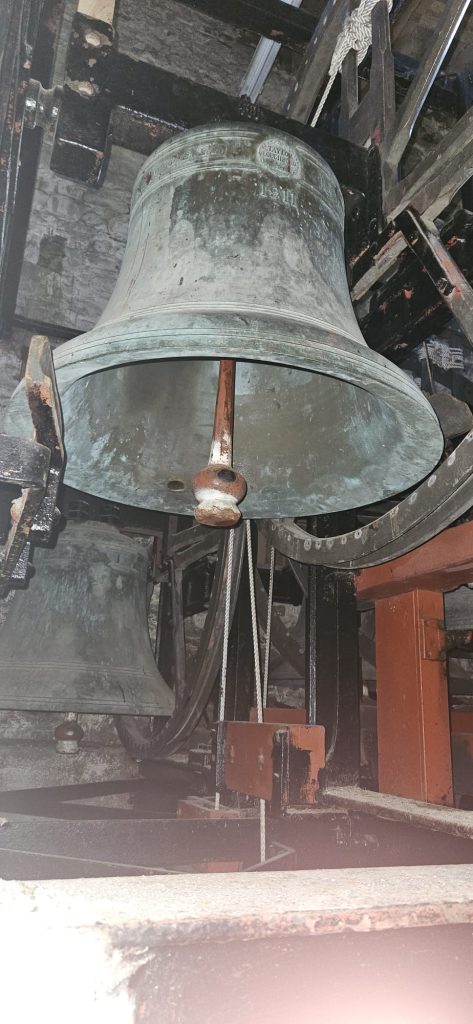
Tower captain of St Andrew’s Church Stratton, Jo Barnes, tolled the tenor bell 100 times to commemorate the funeral of HRH Prince Philip at 2pm on Saturday, April 17 2021 This was no mean feat as the bell at St Andrew’s weighs 21 cwt.
